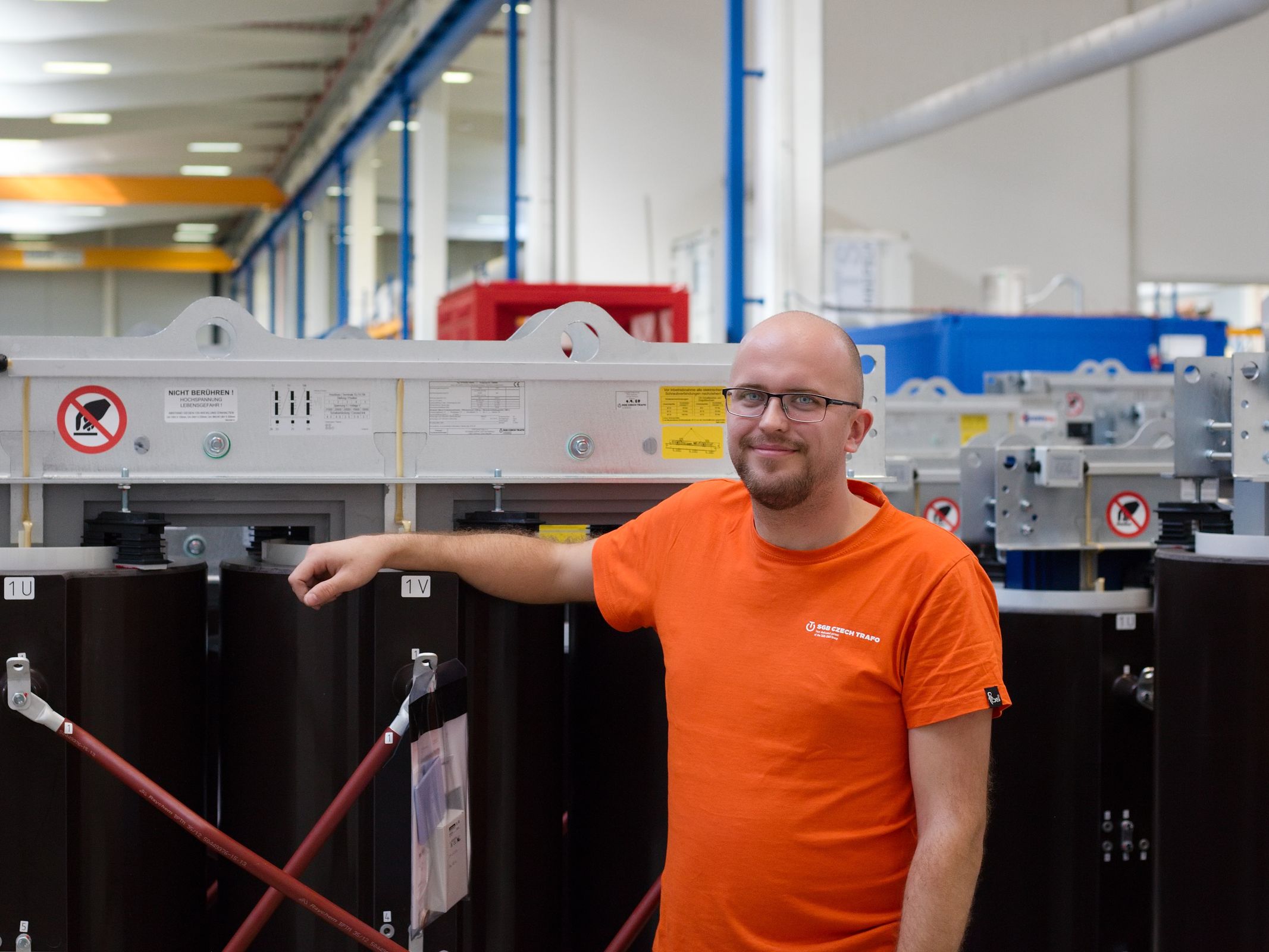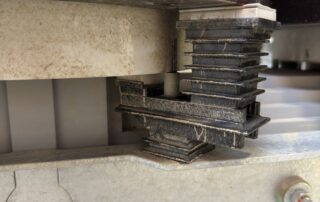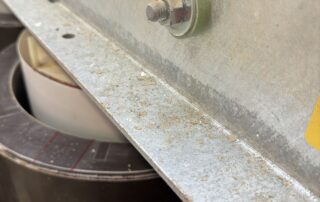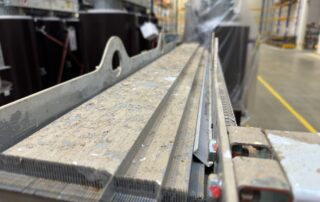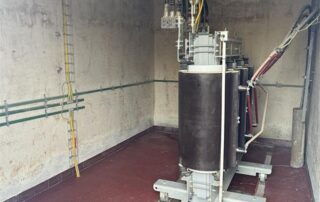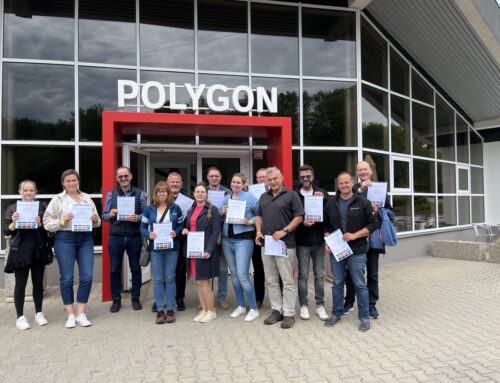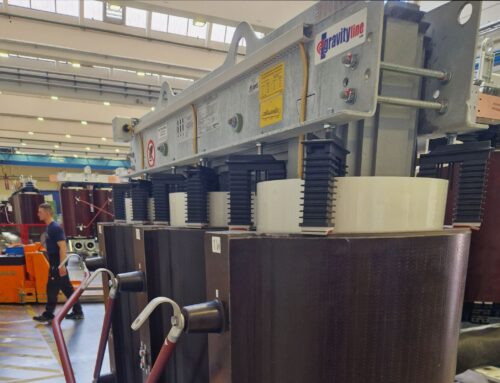In September, the Czech Republic was hit by severe floods, causing devastating impacts on many residents and businesses. This natural disaster also affected our customers and their operations. Our service team was prepared to intervene as quickly as possible to help restore the smooth operation of the equipment.
Although the water receded and basic cleanup was completed, it was evident that the transformers stood in a water column approximately 3 meters high during the floods.
“During the initial inspection, I found that the transformers showed no visible damage,” said our electrical engineer and head of the testing laboratory, Nikolas Olšanský. “However, the sensors, specifically the temperature sensors, were submerged, and their reliable operation could not be guaranteed, so we replaced them as a precaution. This was also the only component that needed to be replaced.”
Following this visit, the transformers were transported back to Olomouc, where they underwent thorough cleaning and inspection. Although they were dirty and partially flooded, routine tests showed that the transformers were functioning flawlessly, with none of the measured parameters deviating from the standard. Nevertheless, we decided on a complete disassembly, cleaning, and drying of the low-voltage coils, carried out at around 130 °C over an entire shift.
After this procedure, the transformers were reassembled and tested again – and once more, they passed with flying colors. This demonstrates the high resilience of our transformers against extreme conditions, such as flooding.
After this procedure, the transformers were reassembled and tested again – and once more, they passed with flying colors. This demonstrates the high resilience of our transformers against extreme conditions, such as flooding.
“This entire situation speaks to the durability and resilience of our transformers. If water had penetrated directly into the windings of the LV coil, it could have resulted in a short circuit between the windings, leading to complete transformer failure in the worst-case scenario. It’s also a major advantage that the HV coil is fully encased in resin, making water penetration impossible. Potential faults can be easily detected during routine testing, eliminating any risk,” concludes Nikolas.

